I stayed at the Rengejo-in temple lodging in Koyasan, Wakayama Prefecture.
More than 50 temples can be used as lodgings within the sacred grounds of Mt. Koya, including temples related to Sengoku warlords, and temples where you can enjoy beautiful gardens and fusuma paintings. And from check-in to check-out, there is a timetable, so you can have valuable experiences such as morning and evening services, copying sutras, and Buddhist cuisine.
This time, in addition to what kind of experience you can have at the temple lodging, we will tell you a review of staying at Rengejo-in.
目次
Let’s take a look.
Access and check-in
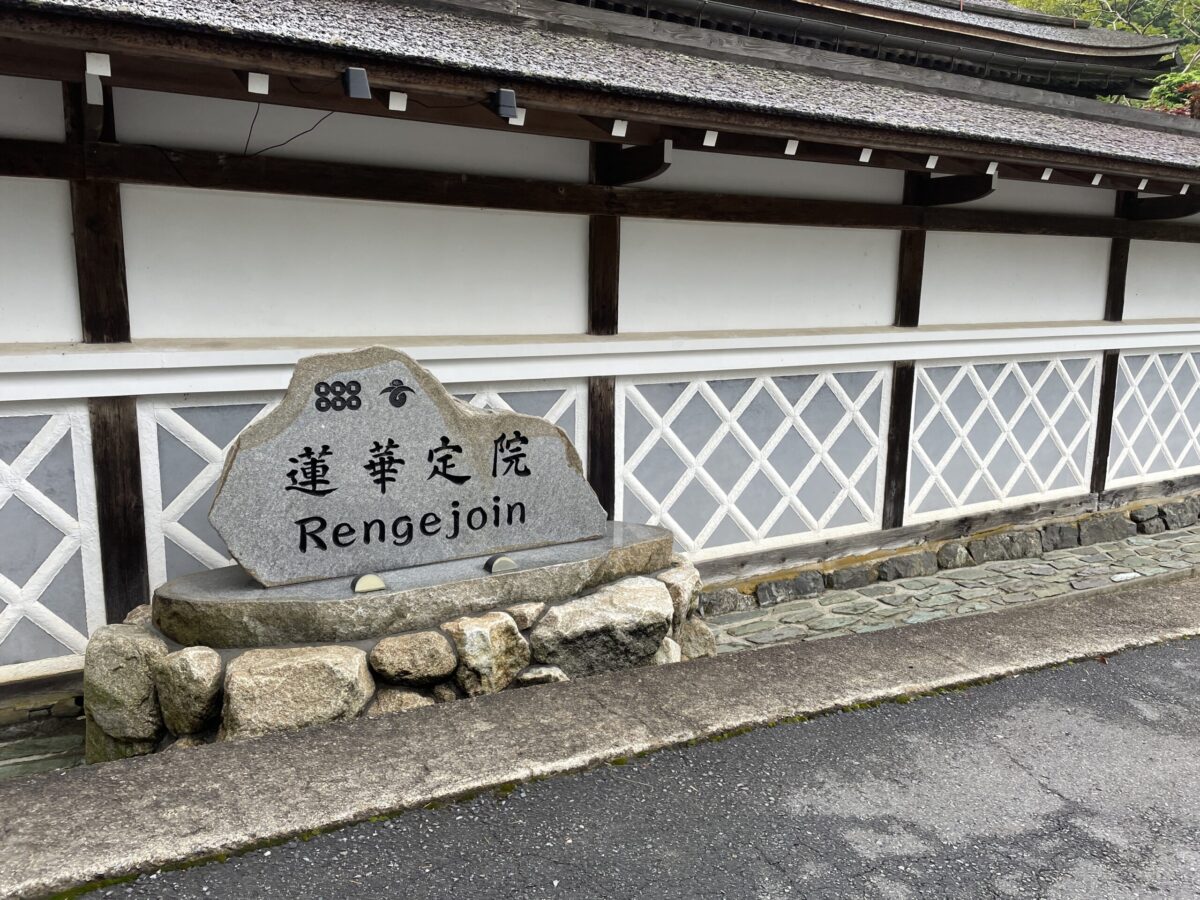
Of course, if you plan to stay on your trip to Koyasan, we recommend Rengejo-in Temple, which is affiliated with the Sanada family.
Rengejo-in Temple is located on the road behind Kongobu-ji Temple, near Tokugawa Reitai. If you come to Koyasan via the Koyasan Cable Car, take the Nankai Rinkai Bus and get off at the Isshinguchi bus stop.
Parking lot is fully equipped and is very convenient.
At the entrance of Rengejo-in, there is a splendid mountain gate.
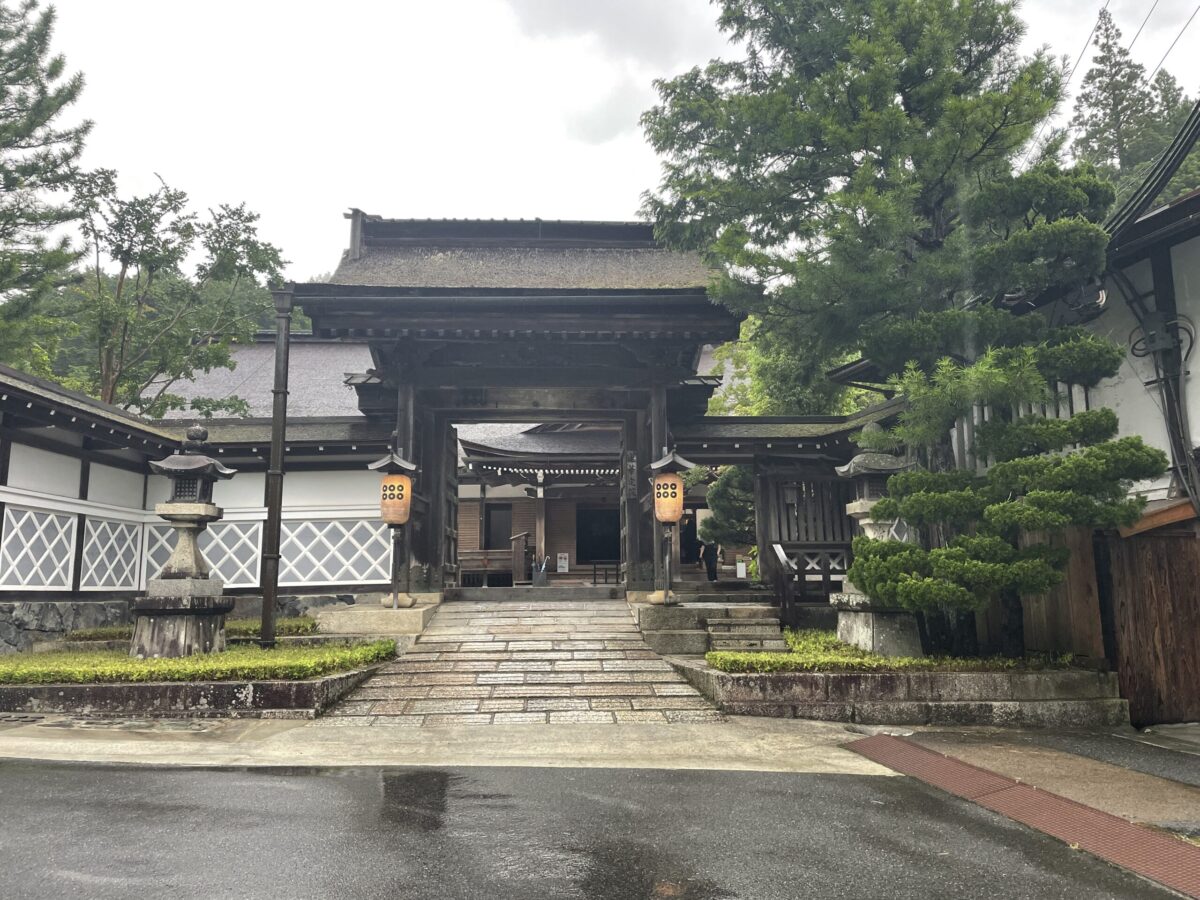
Rokumonsen high-hanging lanterns are hung, and Rengejo-in is written on the back.
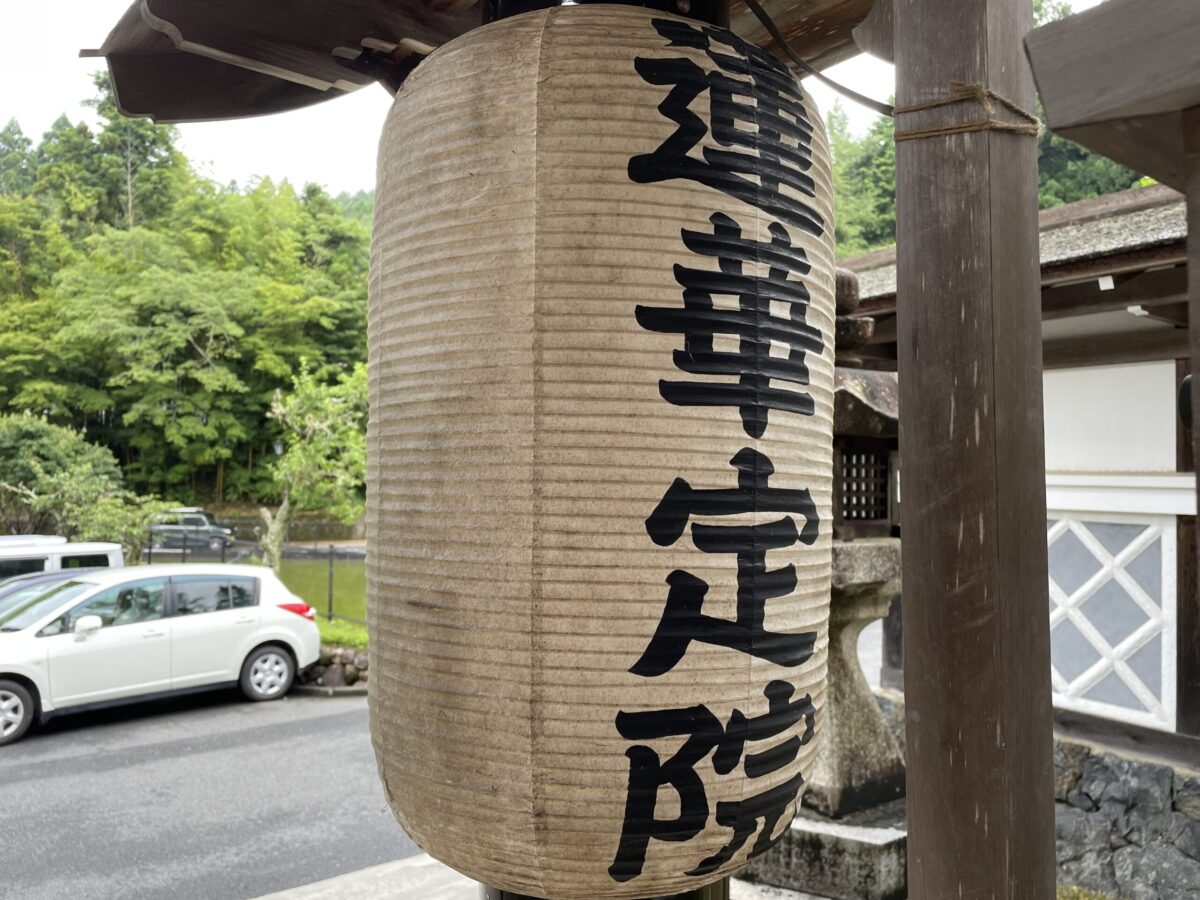
After passing through the gate, you can see the main hall and the garden.
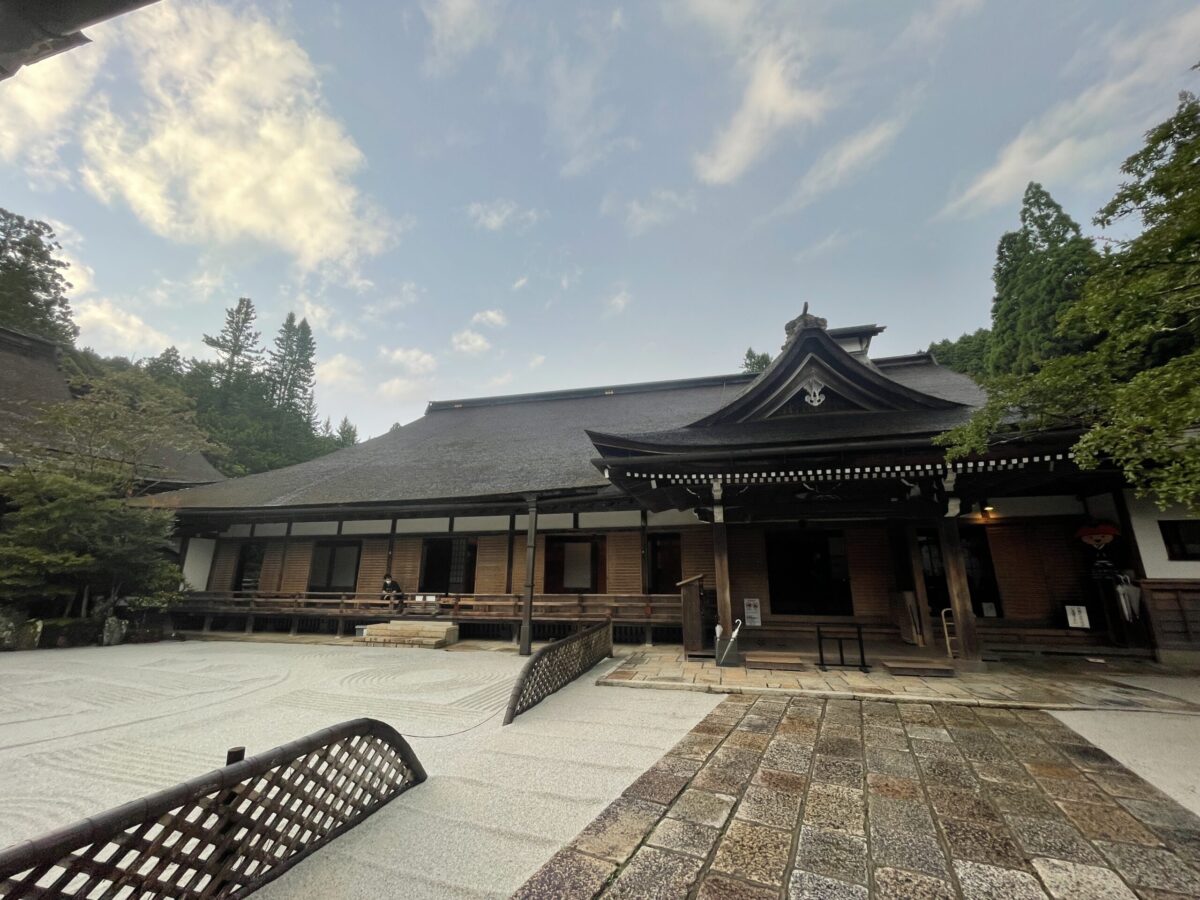
The garden inside the temple is so beautiful that it calms the mind.

Since the check-in time is 15:00, you will receive an explanation of how to check-in and how to spend the temple at the reception here.

Inside the temple and room introduction
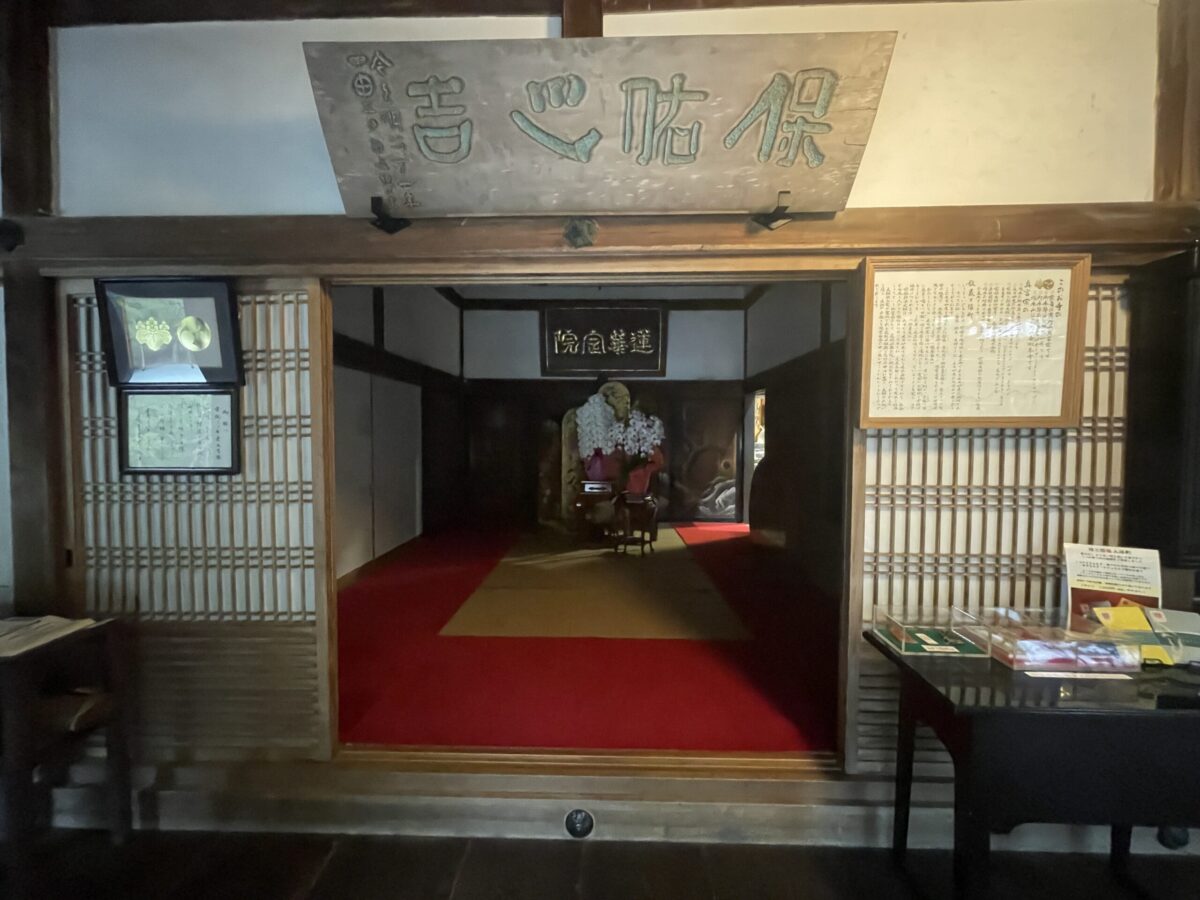
After finishing the reception, a young monk introduced the temple and guided me to the room.
Rengejo-in was founded by Yukikatsu Shonin at the beginning of the Kamakura period (Kenkyu era). The principal object of worship is Amida Nyorai.
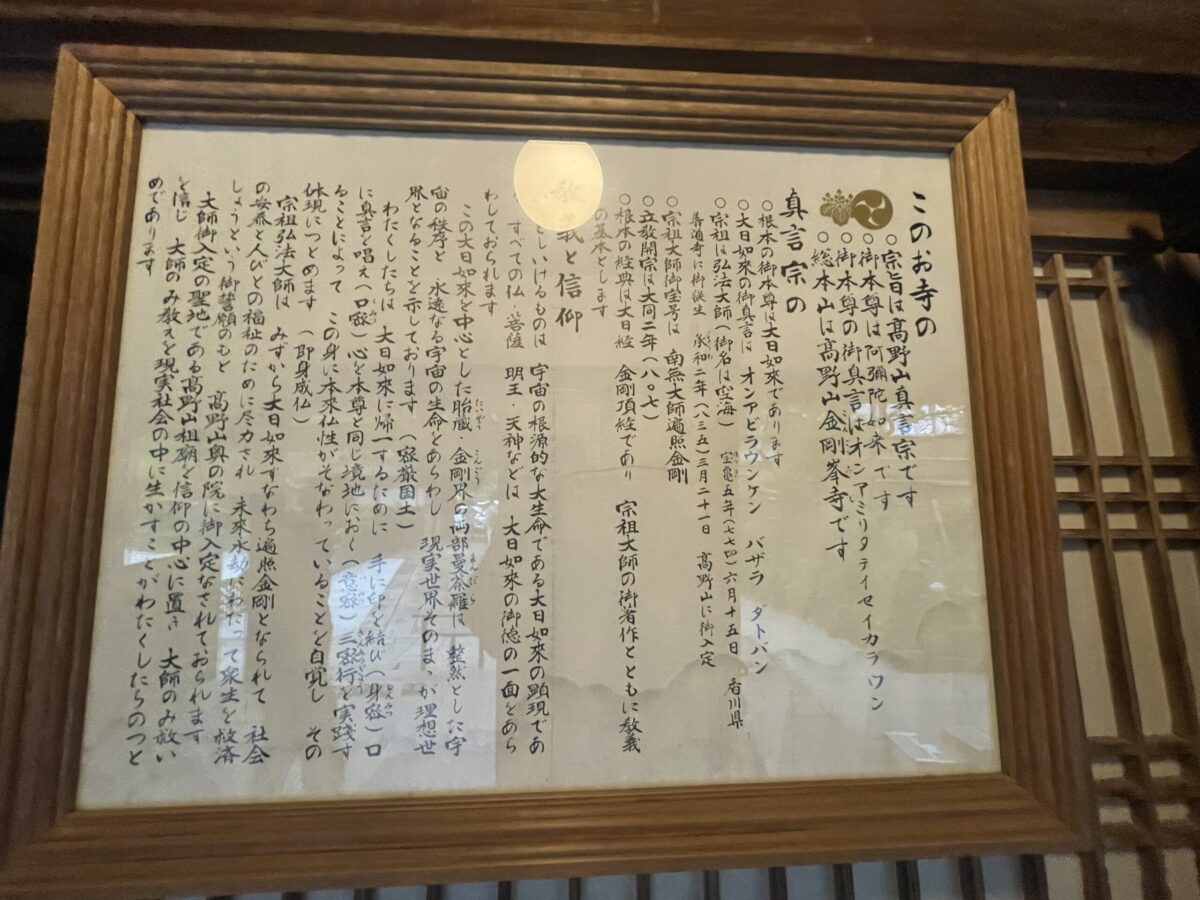
Masayuki Sanada and his son Nobushige, who were defeated by the Western Army in the Battle of Sekigahara, were ordered to confine themselves to Mount Koya. That’s it.
Later, he renewed the contract with Nobuyuki Sanada, who was transferred to the Matsushiro clan, and became known as ‘Sanadabo’ as the family temple of the Sanada family in Koyasan.

We were also shown to a room that only guests could see.
It’s upstairs here.

The kitchen with the upper room where Masayuki Sanada sat was once destroyed in a fire in the Edo period, but it was rebuilt in the same place with the same scale and style, and it is said that it can be reminiscent of that time. That’s what I mean.
There seems to be no doubt that they were here about 400 years ago.
Items of Sanada Masayuki and Nobushige were kept.

The explanation of the temple ends here, but I’m curious, so I’m going to look around the temple.
Courtyard on the way to the room.
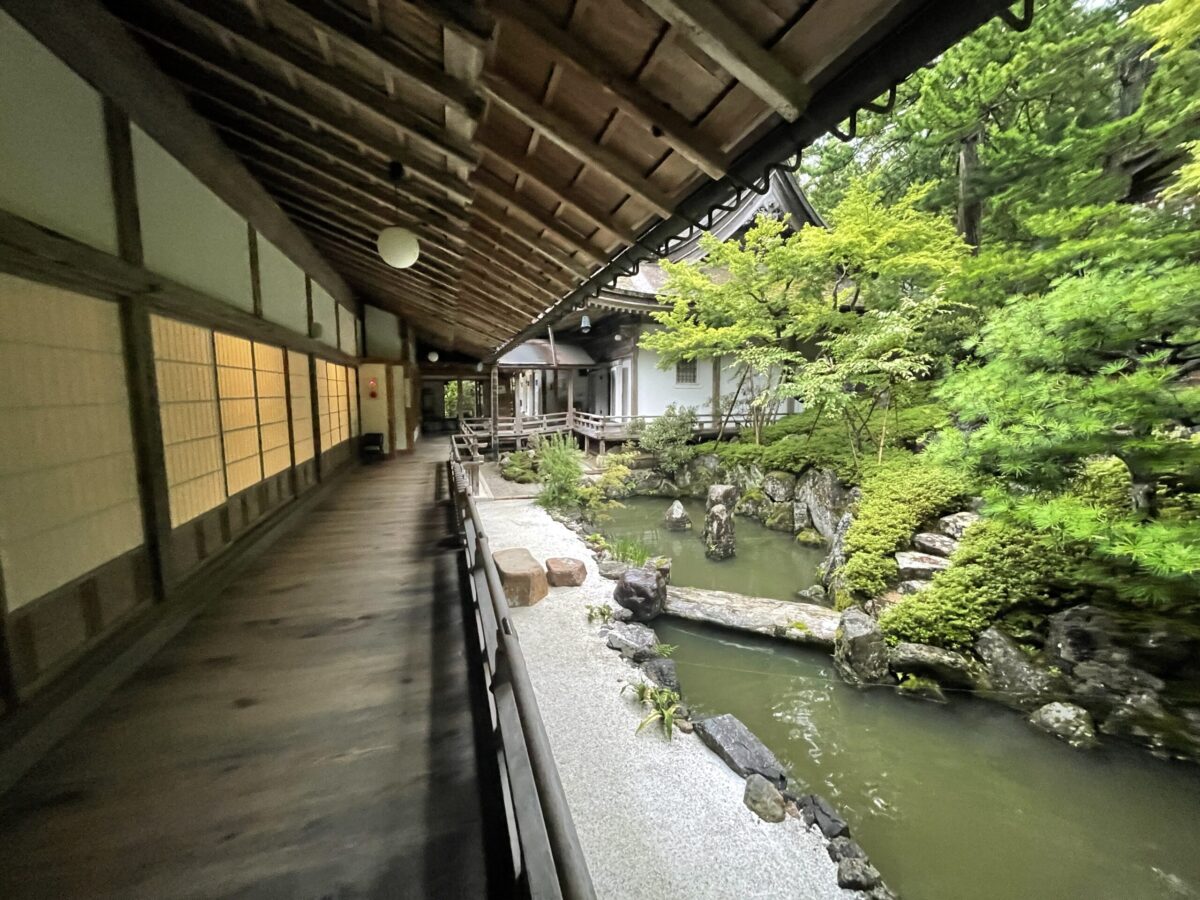
The maple on the left and the pine on the front are said to be over 500 years old, and it is said that Sanada and his son used to look at them. A lot of carp were swimming.
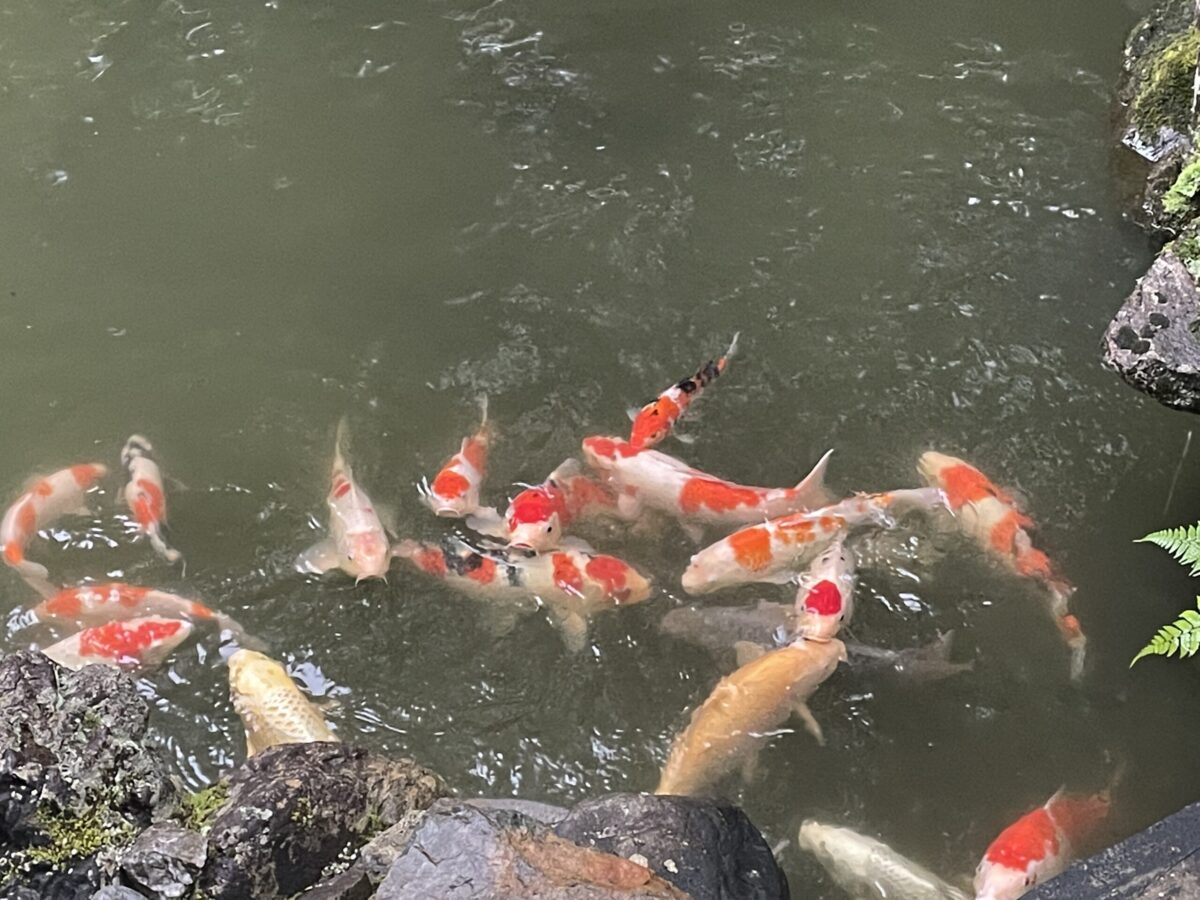
There was also such a shining staircase in the hallway of the shukubo.
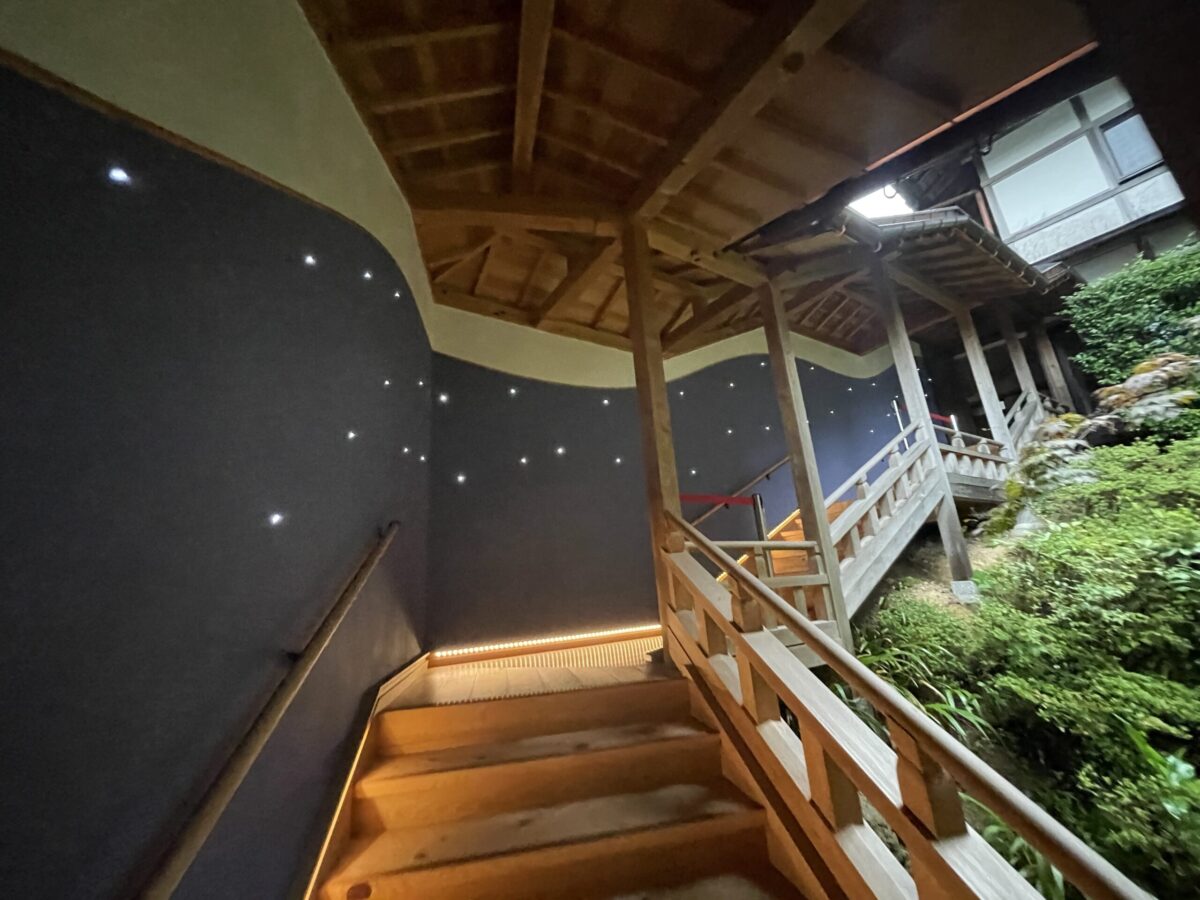
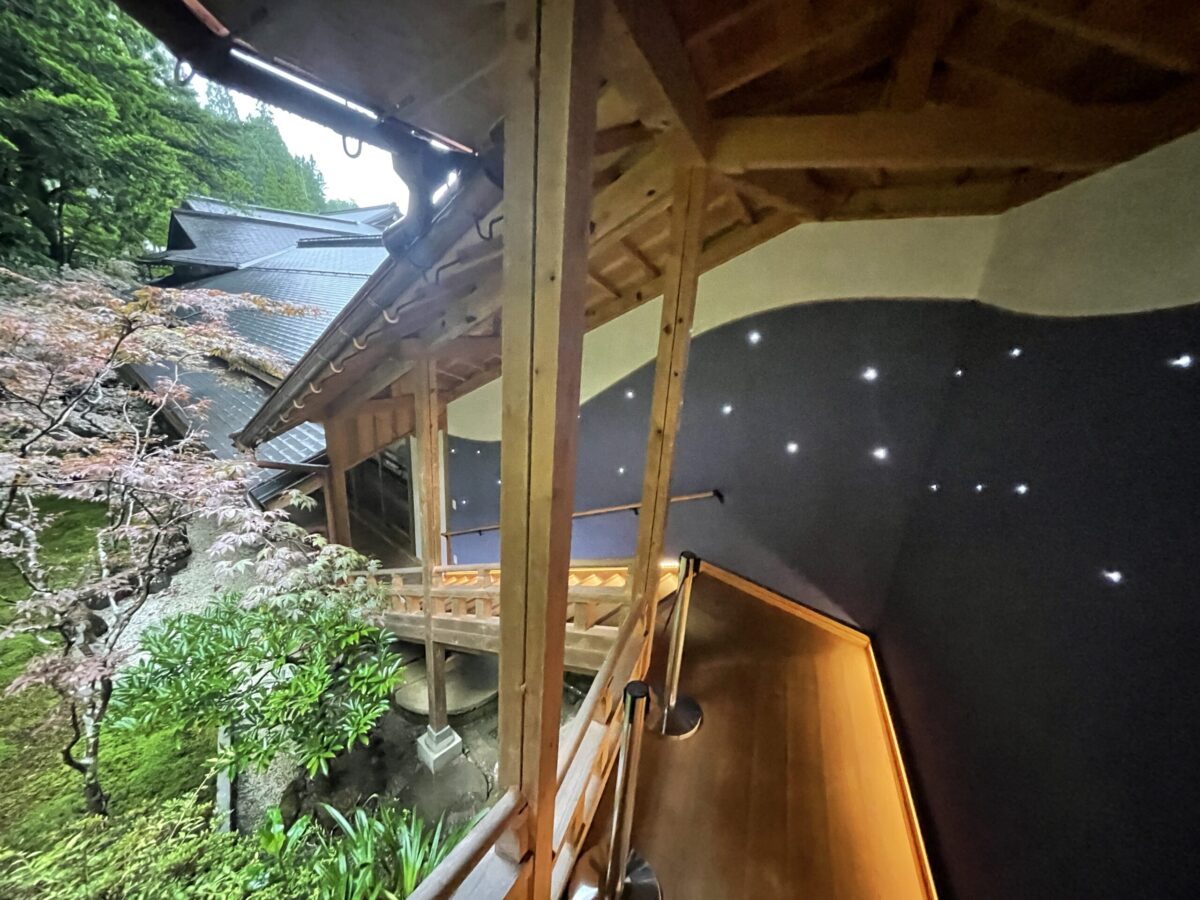
The hallway of the temple lodging is so long and wide that it looks like a maze.

The room
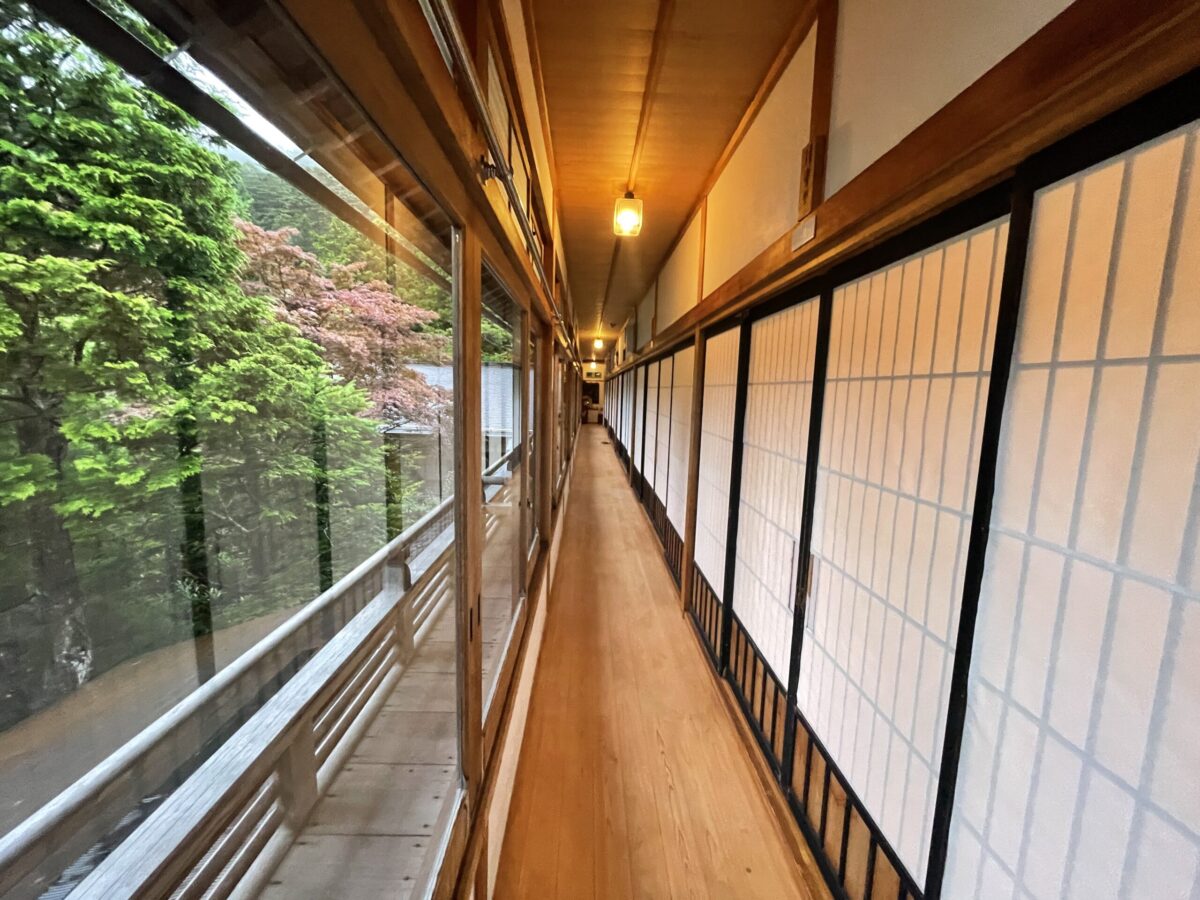
A monk showed us where to stay.
The room we will be staying in this time is called “ち”.
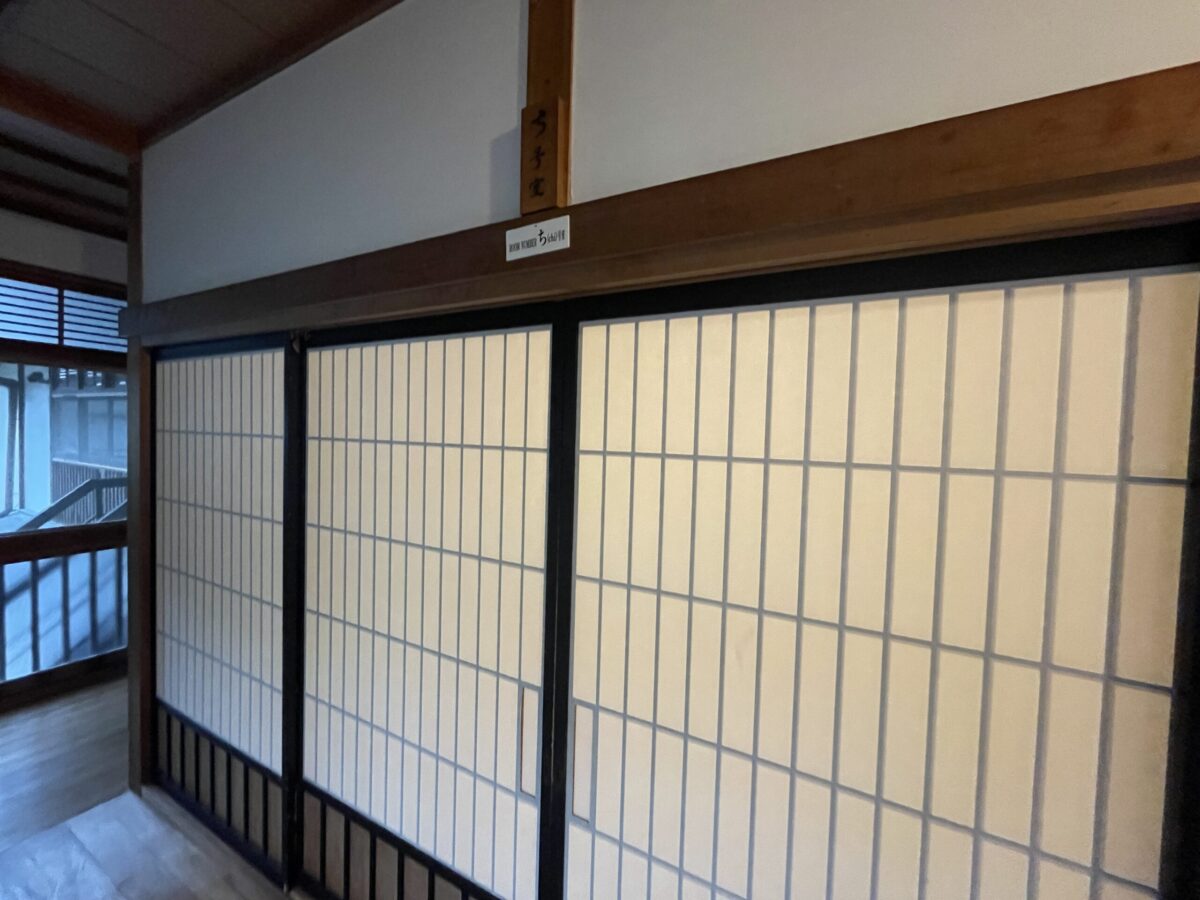
The room looks like this, two sides are gold fusuma and the other two are shoji.

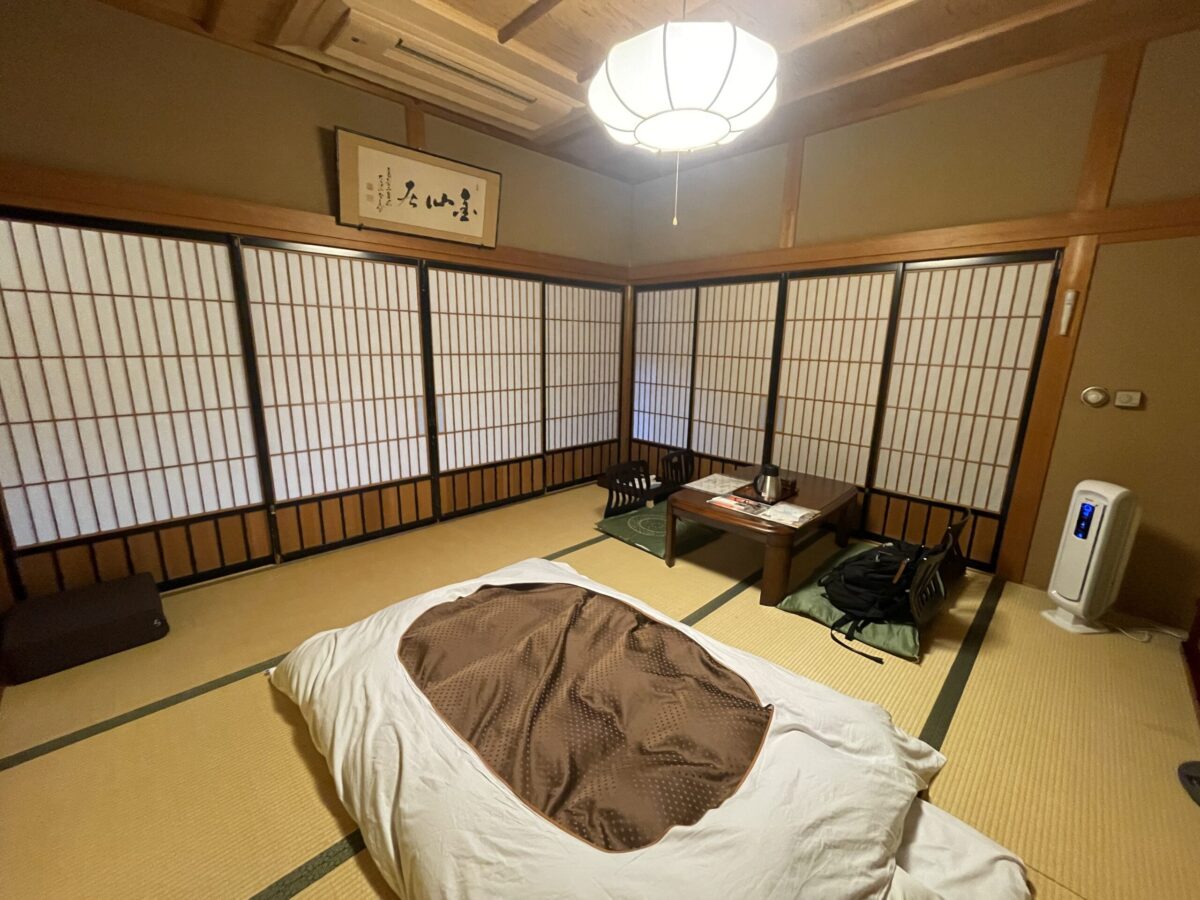
There are rooms with a view of the garden, but this time I booked an economy room.
The room has a desk, a cushion, a safe, a yukata, a towel, and a toothbrush.


There was no TV in the room because it was a shukubo. I personally prefer not to have it, so it’s OK.
The toilet, washbasin, and large bath were shared.

Relax in your room until your next appointment.

This is what a day at a temple lodging looks like
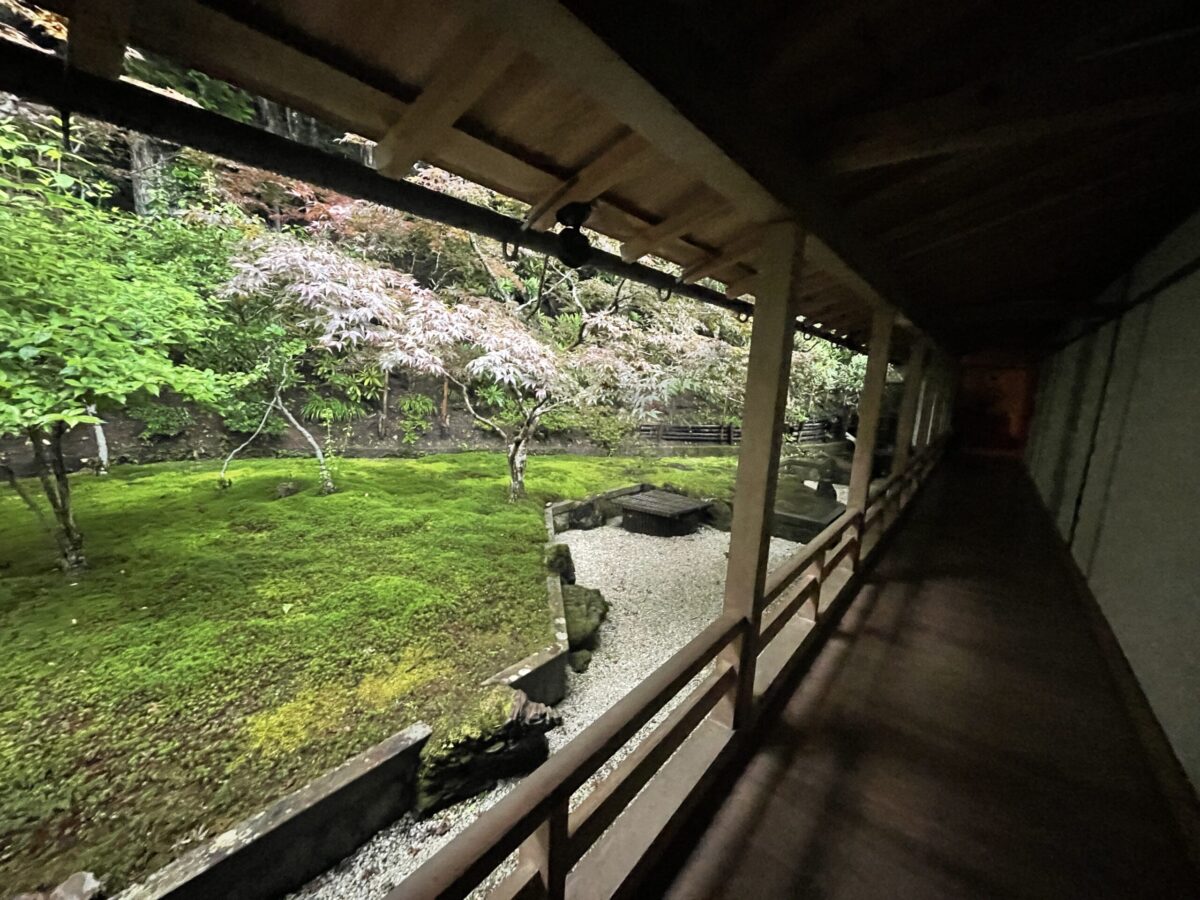
Check-in at 15:00 Visit the Jodan-no-ma, which is related to Masayuki Sanada and Yukimura’s parent and child!

Then relax in your room.
17:00 Ashikan (Ajikan)
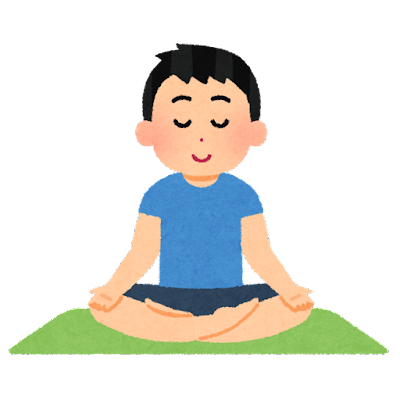 Experience meditation together as a monk’s daily practice.
Experience meditation together as a monk’s daily practice.
6:00 p.m. Shojin cuisine dinner
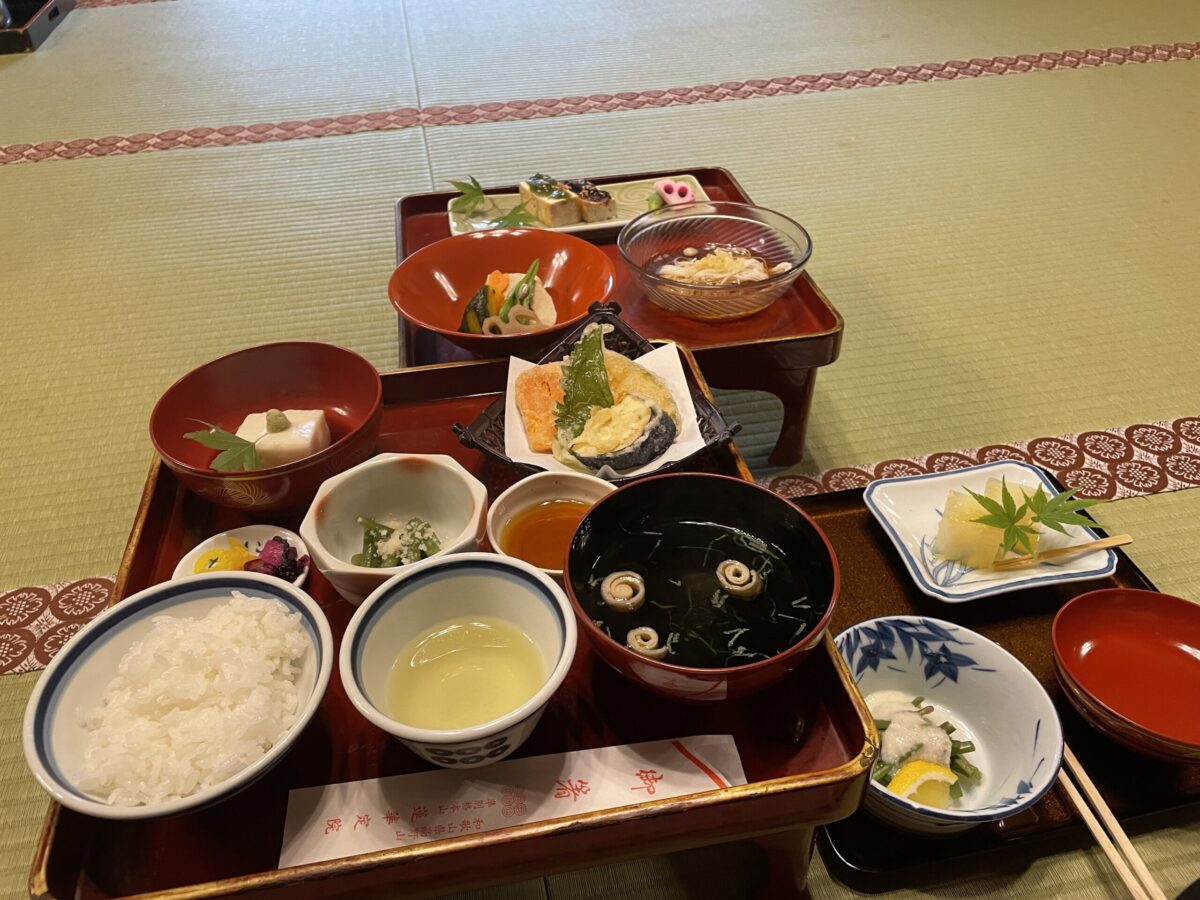
19:00 bath

20:00 Free time for copying sutras
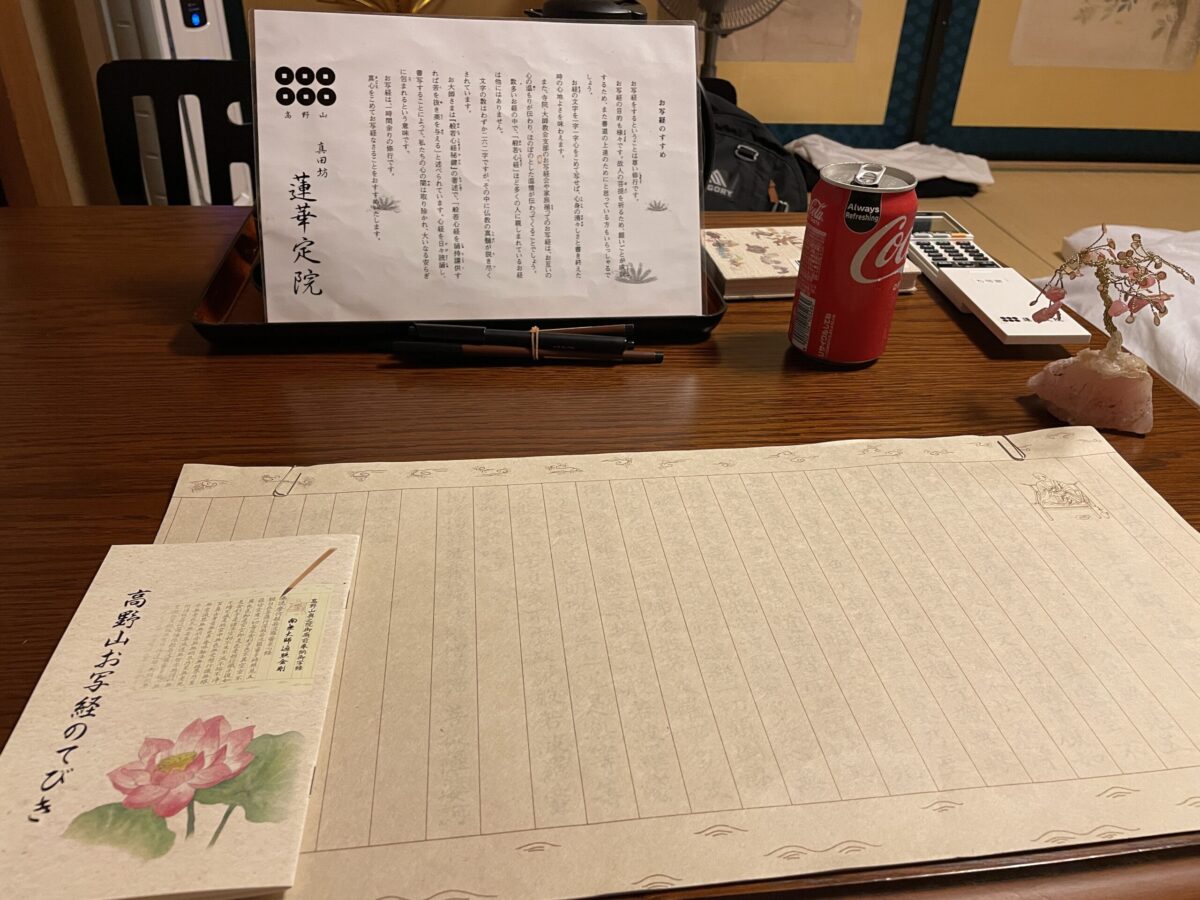
22:00 go to bed

6:00 morning sutras

Sutra chanting penetrates comfortably into the mind and body of awakening.
7:00 A vegetarian breakfast
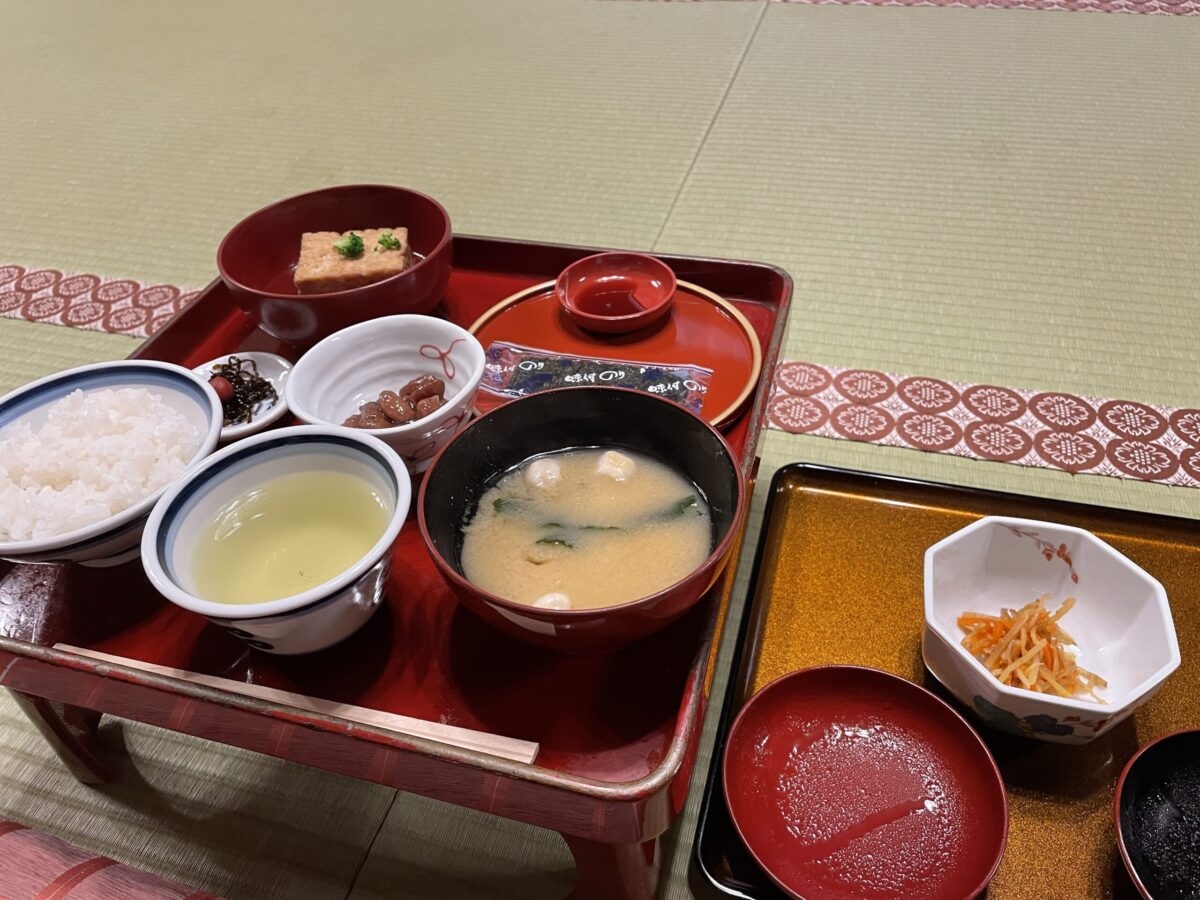
8:00 A walk around the area
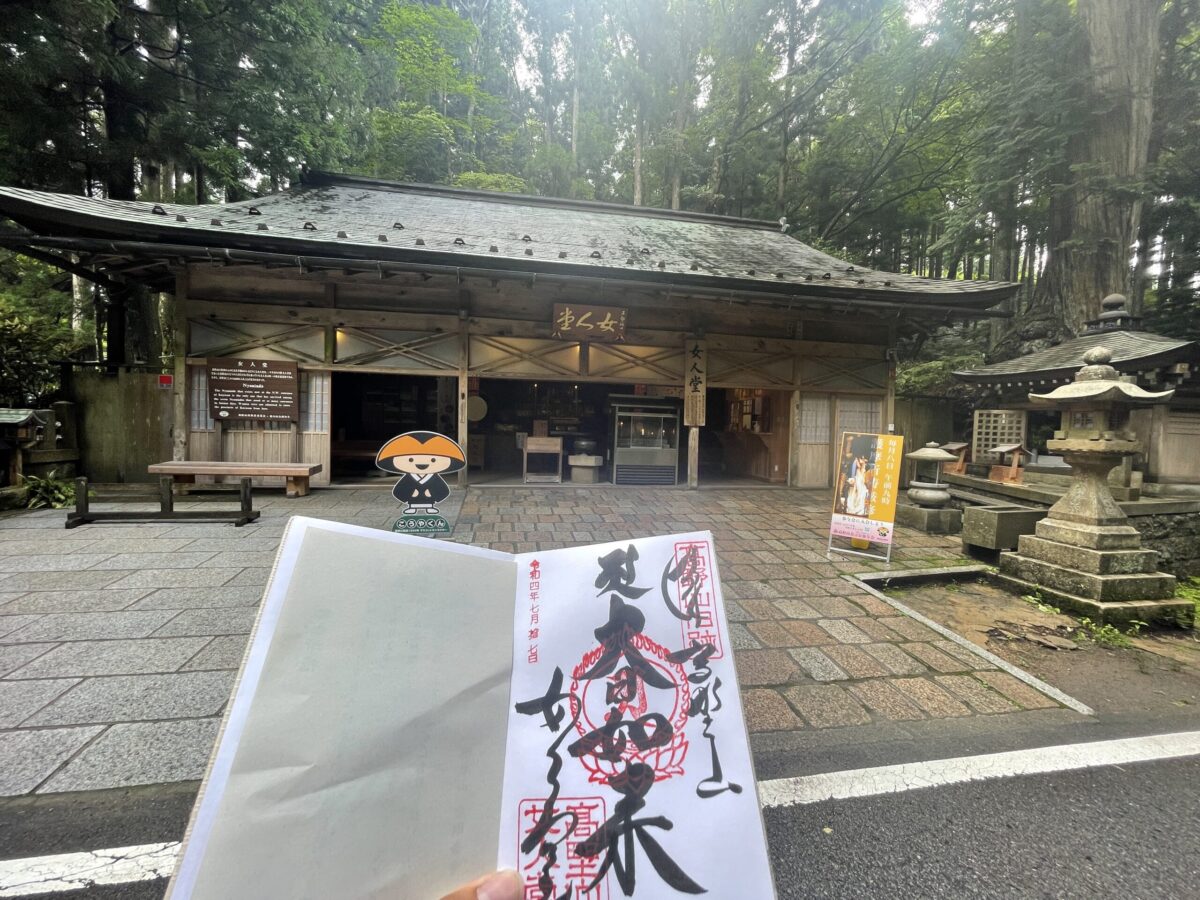
Nyonindo and Tokugawa Cemetery are nearby.
Check-out at 10:00 A quiet morning is recommended for pilgrimages to Koyasan!
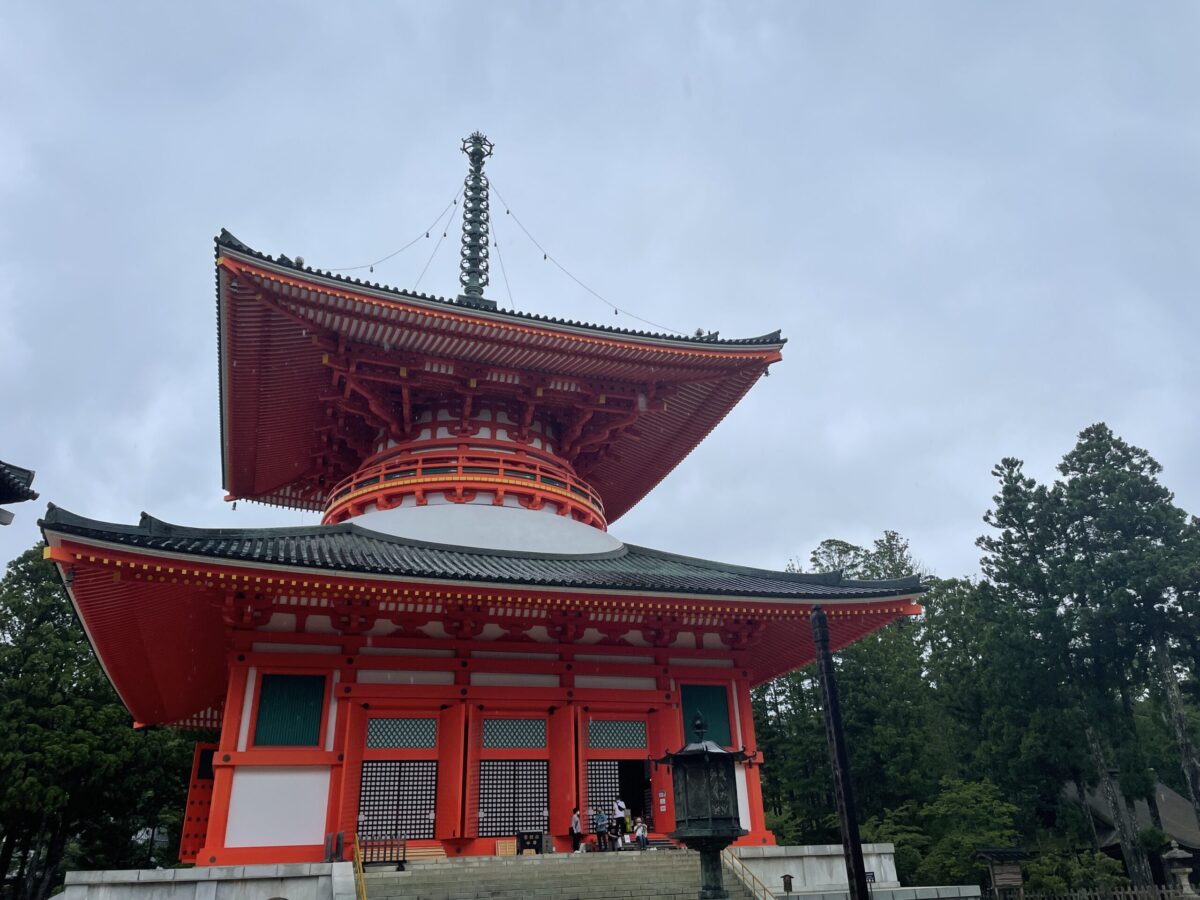
The difference between a ryokan and a temple lodging is that from the time you check in to the time you check out, there is a fixed timetable, so you can have valuable experiences such as morning and evening services, sutra copying, and Buddhist cuisine.
It felt nostalgic, like a school trip.
Meals are Shojinryori
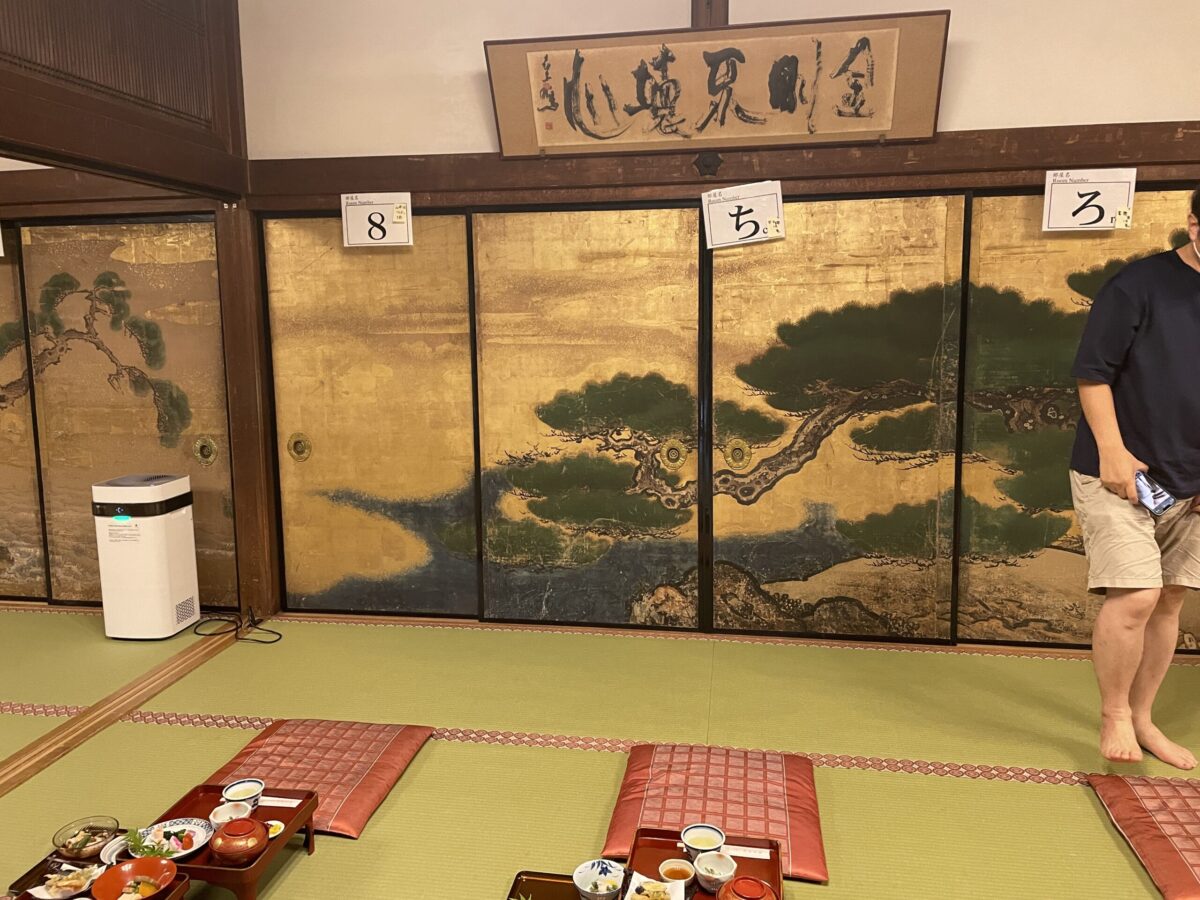
Dinner and breakfast can be served in the large hall of Sanadabo.
You can enjoy unique Buddhist cuisine that does not use any animal protein such as meat and fish, and you can feel the temperament like a work of art.


The savory Buddhist vegetarian cuisine made with shiitake mushrooms, kombu seaweed, and dried vegetables is gentle on your stomach and is also healthy!
I savored it slowly. What a luxurious time!
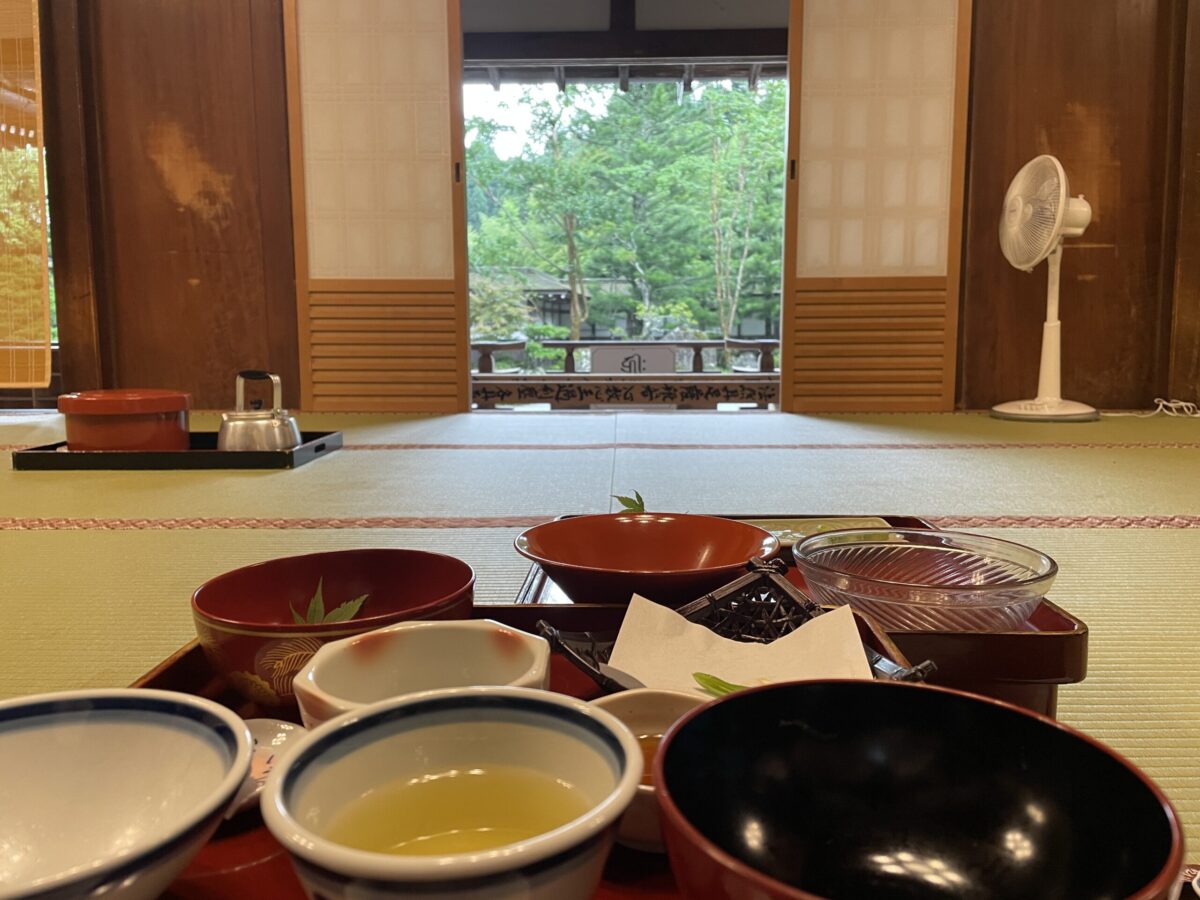
Hotel services and basic information
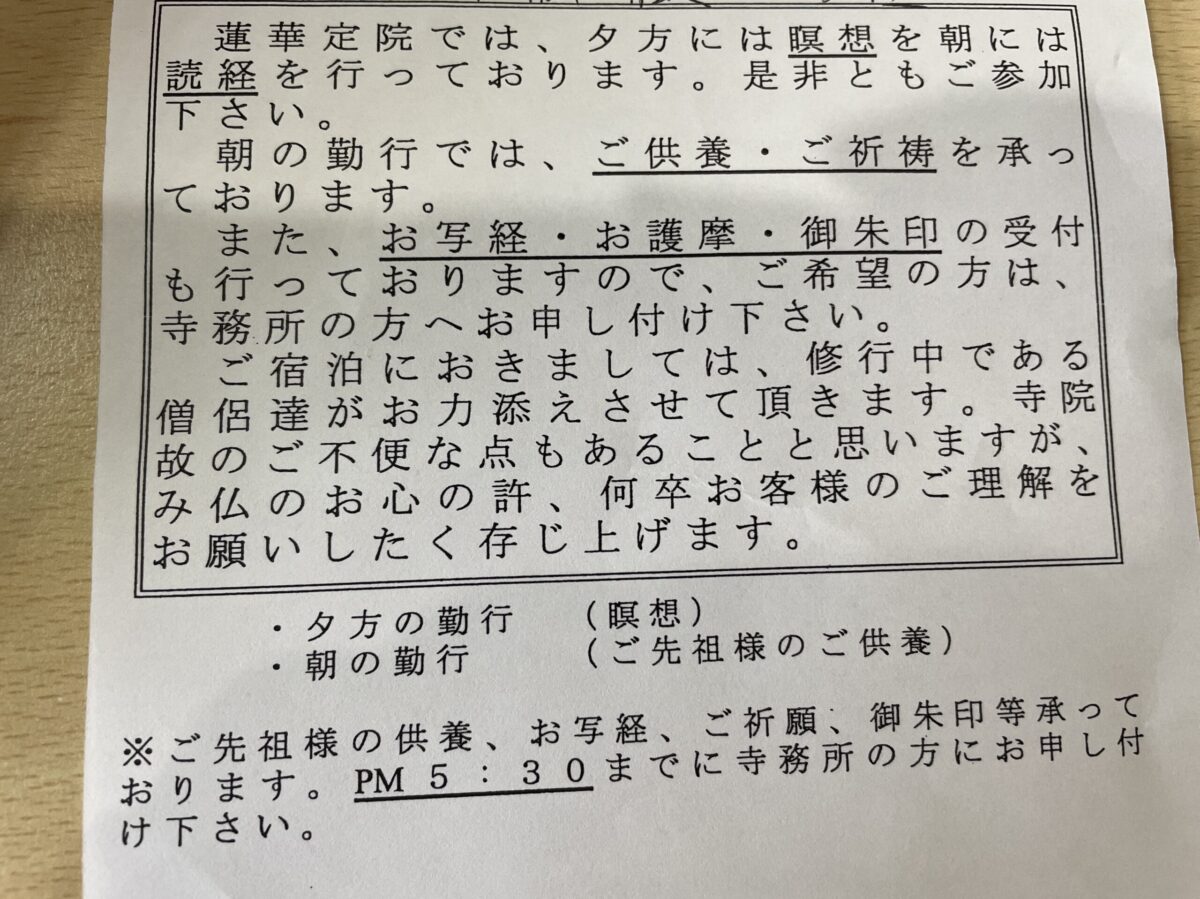
During the morning service, there is a service to hold a memorial service for the deceased and pray for the peace of the family.
In addition, since Rengejo-in is a temple, he also drew a goshuin.
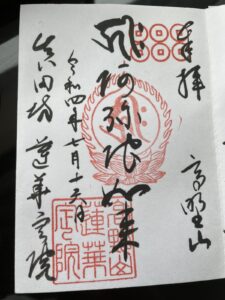
It costs 1000 yen more, but I was able to experience sutra copying.
Copying a sutra allows you to experience the time that purifies your mind and body. I will carefully write the 278 characters of the Heart Sutra. It took about an hour!

summary

In the silence of Koyasan, I was able to experience monk training, and it was an inn where I could have a valuable experience where I could spend my time slowly. I think that the extraordinary time and experience that can only be experienced at Koyasan will relax your mind and body. When you go to Koyasan, why don’t you consider it? Official site here
Thank you for reading to the end.We will continue to distribute and create interesting articles that will be useful in the future!
Check out the Japanese version below!
【高野山】蓮華定院宿泊記!お寺で一晩過ごしてみた!部屋食事お勤めなど徹底紹介!
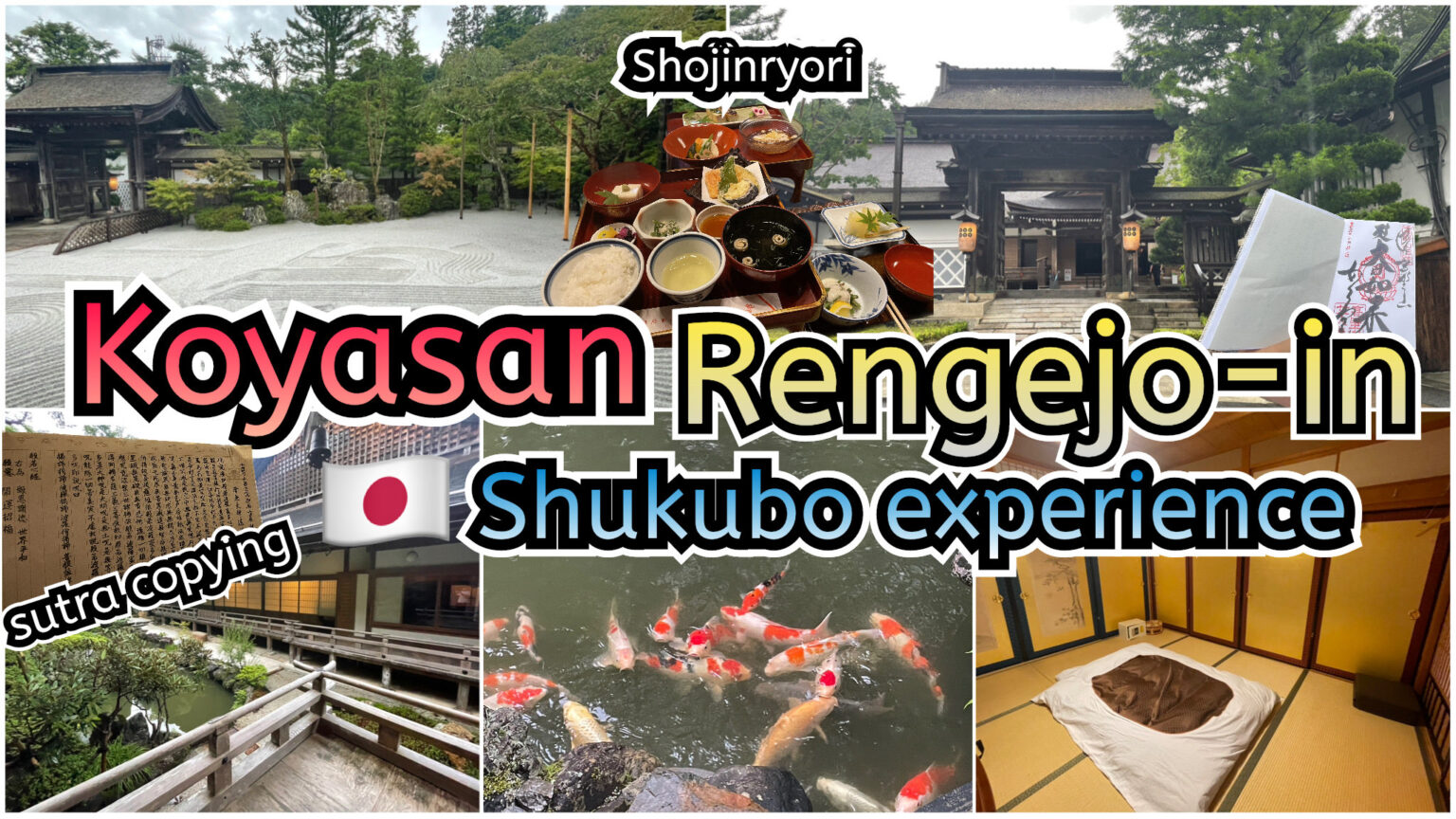
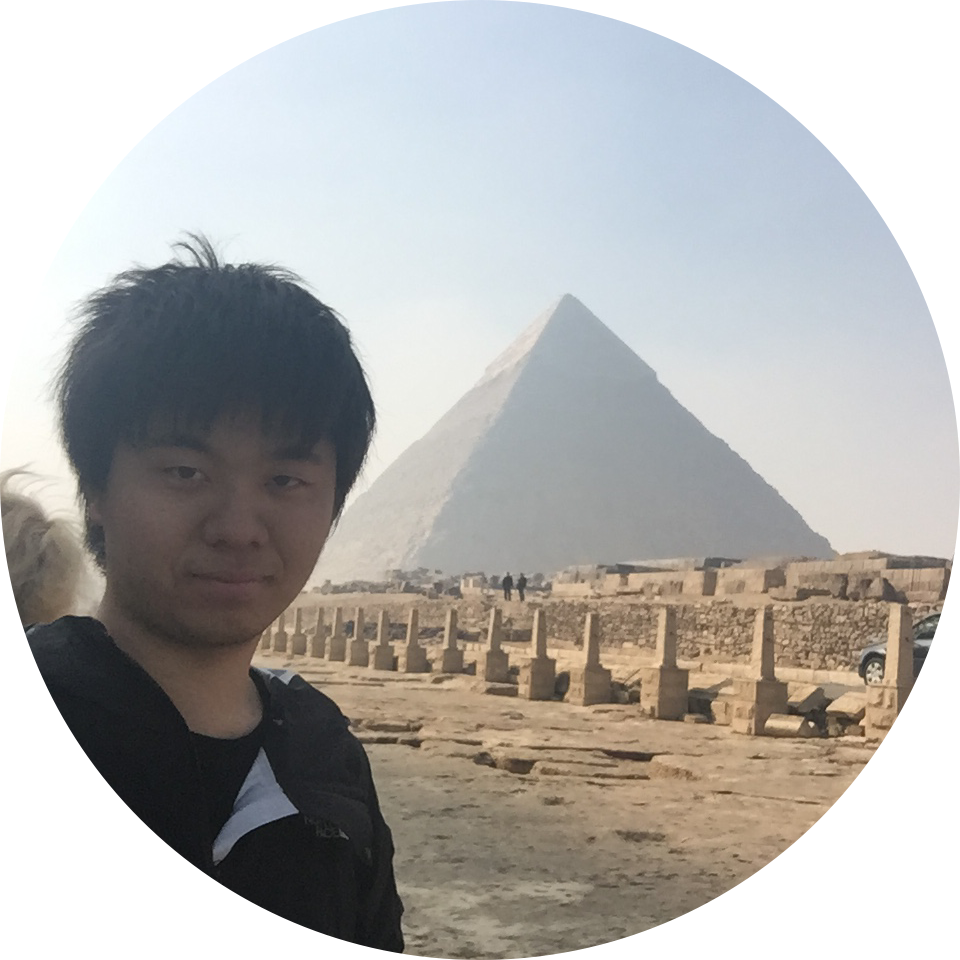


コメント